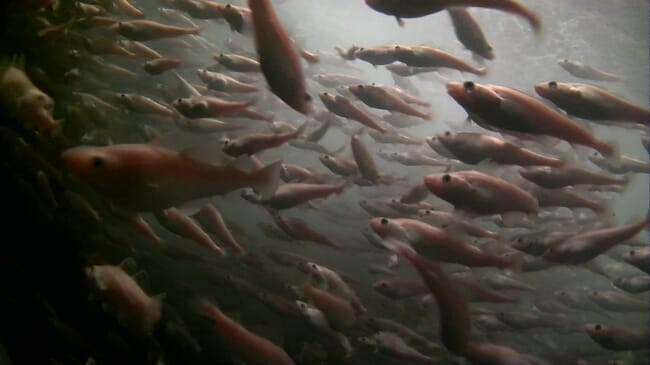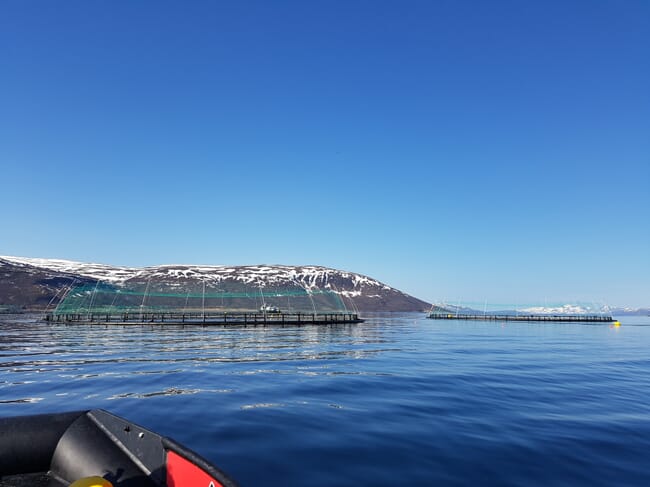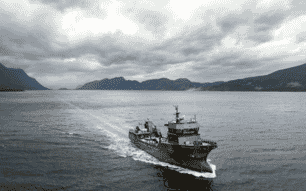Trondheim-headquartered Norcod aims to produce 9,000 tonnes of cod per year in 2021 and a year-round supply of 25,000 tonnes from 2025.

The company has licences for two facilities in Mausund, northwest of Trondheim, that are being upgraded. Its first batch of 260,000 fry is in production and ready to be transferred to the sea in December 2019. A further batch of juveniles is slated to arrive the same month. Norcod chief executive Rune Eriksen says the fish are showing uniform growth well ahead of expectations.
According to a statement issued today: “the company aims to exploit projected strong demand for fresh cod amid stagnating supply from the global capture market. It promises a stable quality of cod nurtured in its natural habitat and plans to ramp up production to an industrial scale over the next few years.”
“Lean cod is basically a fantastic product,” says Eriksen. Farmed fish grow considerably faster than their wild counterparts and the goal is to deliver fresh, white meat year-round.
No cod is being farmed industrially anywhere in the world today, Eriksen says. There are other players farming cod in Norway but on a limited scale.
“Now it's possible. We have the chance to write history as the world supplier of farmed cod.” The project will span the entire production cycle from fry through harvesting, processing and distribution.
According to the company, market research suggests that the product can achieve the highest prices through Sirena’s global organisation and customer network.

Past failures
There have been previous attempts to farm cod in Norway but the last push from 2004 to 2012 ran aground due to fundamental mistakes and immature biology. There was a mixture of wild and bred broodstock, with high mortality and cannibalism in overcrowded nets. Poor follow-up of the fish and feeding was typical, Eriksen says, with a lot of waste and escapes.
There was a lack of seasonal planning and clearly defined commercial strategies while concessions were bounced around at overinflated prices. Norcod spent a lot of time examining what went wrong and what has to be in place to ensure success this time around. “The situation is completely different today,” says Eriksen, especially as the now massively improved biologic material promises much higher yields.
Furthermore, the only existing providers of cod fry in sufficient quantity are both based in Norway. Genetics work has experienced quantum leaps since the early 2000s, achieved by individually selecting the best fish to improve characteristics and disease resistance. The broodstock are now in their sixth generation.
“It's a completely different fish and a highly stable product,” Eriksen says.
The fish are largely domesticated and accustomed to confinement. Eriksen explains that the smaller head of today's generation is a “game changer” resulting in much higher yields. Conversely, in wild cod the head can account for up to 40% of body mass, he says.
Nofima, the Norwegian government-funded R&D aquaculture institute, has been at the forefront of this since starting their cod farming research programme in 2002. The programme was recently proposed extended in the national budget for 2020.
Using the salmon farming model
Eriksen plans to build a trusted brand rooted in responsible methods and transparency. Norcod will apply the same principles a salmon farming in Norway including, for instance, limitations on the number of fish in each net, new cages designed to hinder escapes and optimised feeding systems.

“We're taking all the great things developed in salmon farming over the last 10 years; the latest sophisticated technology and equipment,” he says. He adds that one advantage of cod is that you can use more by-product. Norcod aims to utilise 100 percent of the fish including offcuts, which embeds the company firmly in the circular economy amid the drive to minimise waste.
Eriksen emphasises the long-term nature of the project and its intention to expand production in a measured way and notes that state-administered concessions are easier to secure if you already have access to fry. This should bolster its plans to acquire additional operational sites from 2021.



